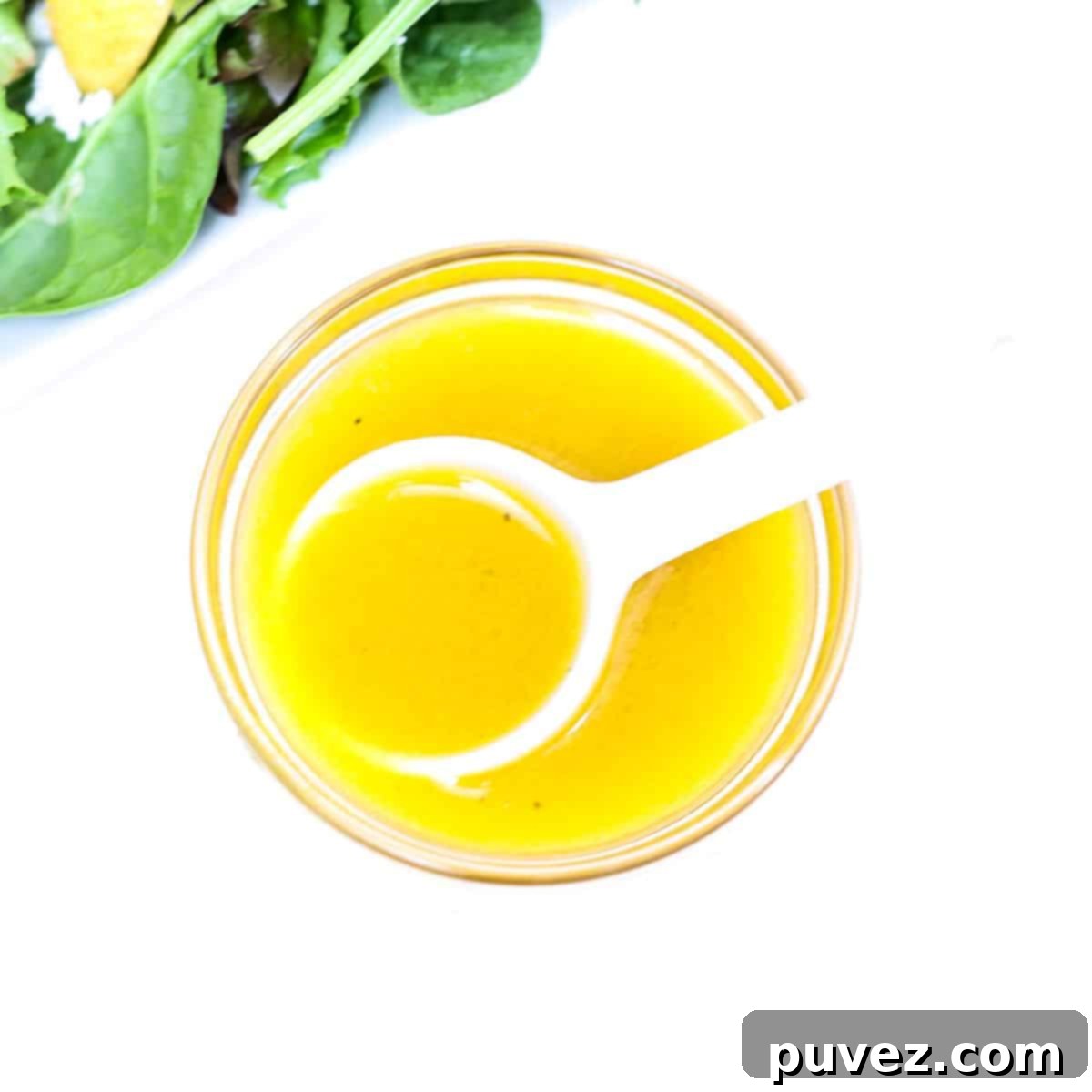Homemade Apple Cider Vinaigrette: Your New Go-To Zesty & Healthy Salad Dressing Recipe
Prepare to elevate your salad game with this incredibly easy, slightly sweet, and perfectly zesty Apple Cider Vinaigrette Dressing! Crafted from simple, wholesome ingredients in mere minutes, this recipe is a true game-changer, especially for kitchen novices and busy home cooks alike. Say goodbye to store-bought dressings laden with unnecessary additives and hello to a vibrant, homemade alternative that will transform your meals.
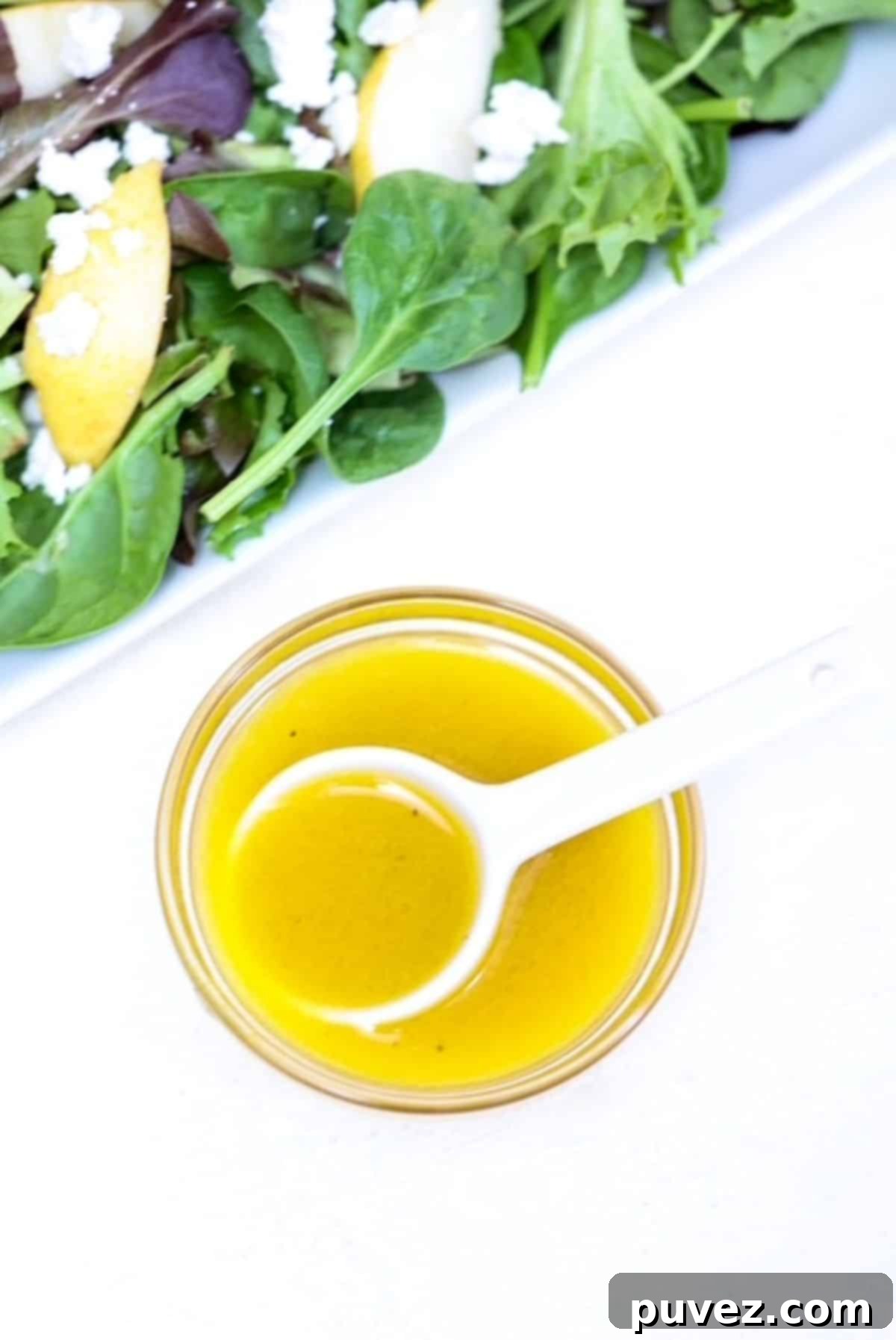
If you’ve always walked past the salad dressing aisle, convinced that making your own from scratch is too complicated or won’t taste as good as restaurant-quality options, think again! Restaurants often prioritize simplicity and budget-friendliness too, using common ingredients to create incredible flavors. This homemade apple cider vinaigrette is a perfect example of how you can achieve delicious results with minimal effort and maximum flavor impact.
What makes this particular vinaigrette so special? It’s the unique twist that takes it from good to absolutely fantastic. While it maintains that perfect balance of sweet and zesty flavors characteristic of a classic apple cider vinaigrette, my version incorporates a secret ingredient: pumpkin puree! Before you raise an eyebrow, let me assure you – you won’t taste a hint of pumpkin spice. Without the typical fall flavors of cinnamon and nutmeg (though you’re certainly welcome to add them if that’s your preference!), the pumpkin puree acts as a neutral, creamy base, lending a luxurious texture and boosting the nutritional value without altering the beloved sweet-and-tangy profile. It’s truly a genius hack!
This fantastic salad dressing was inspired by a delightful grain salad I enjoyed at a local cafe. The dressing was so unexpectedly delicious that it immediately sparked an idea. I first served this zesty apple cider vinaigrette with my Christmas salad last winter, and it was such a resounding hit that my sister-in-law insisted I share it as a standalone recipe. And so, here it is – ready to become a staple in your kitchen!
Why You’ll Adore This Homemade Apple Cider Vinaigrette
There are countless reasons why this easy apple cider vinaigrette will quickly become your favorite salad dressing. It’s not just about the incredible flavor; it’s about the simplicity, health benefits, and versatility it brings to your culinary repertoire.
- Effortless Preparation: Forget complicated steps or fancy equipment. This is truly an easy recipe! To make your own homemade salad dressing, simply combine all the ingredients in a jar with a tight-fitting lid and give it a vigorous shake. Alternatively, a small bowl and a whisk will do the trick just as well. Unlike some other dressings, like my strawberry salad dressing, there’s absolutely no need for an immersion blender here. It’s perfect for busy weeknights or when you need a quick, flavorful boost for your meal.
- Wholesome, Simple Ingredients: You’ll be amazed at how many pantry staples come together to create such a delicious dressing. We’re talking about apple cider vinegar, champagne vinegar, pumpkin puree, high-quality olive oil, Dijon mustard, and a touch of maple syrup. These versatile ingredients have become indispensable in my kitchen, allowing me to whip up healthy, flavorful meals on demand. Using ingredients you already have on hand makes it not only convenient but also incredibly budget-friendly compared to consistently buying gourmet dressings.
- A Truly Healthy Salad Dressing: The addition of pumpkin puree might sound unconventional for a vinaigrette, but it’s a brilliant stroke of culinary genius! The pumpkin puree replaces a portion of the oil, significantly reducing the fat content without sacrificing richness or flavor. More importantly, it adds a small but valuable dose of dietary fiber, essential vitamins (like Vitamin A), and antioxidants, all while remaining completely neutral in taste. This means you get a creamy texture and added nutrients without any pumpkin flavor dominating the classic apple cider vinaigrette profile. It’s a smart way to make your salads even healthier and more satisfying.
Dietitian Tip: Take Control of Your Nutrition
Did you know that store-bought foods are a major contributor to sodium intake in United States diets, accounting for 62% of the total? This alarming statistic highlights the importance of being mindful about what’s in our food, especially common condiments like salad dressings.
One of the most significant advantages of making your own salad dressings at home is gaining complete control over the ingredients. This means you can actively manage the amount of sodium you consume, opting for less salt than many commercial varieties. Furthermore, you can choose the type and quality of fats you use. Instead of processed vegetable oils or unhealthy additives, you can select heart-healthy extra virgin olive oil, which is packed with beneficial monounsaturated fats and antioxidants. Making homemade dressings empowers you to craft a healthier, more personalized diet, ensuring your meals are both delicious and truly nourishing.
Key Ingredients for the Perfect Apple Cider Vinaigrette
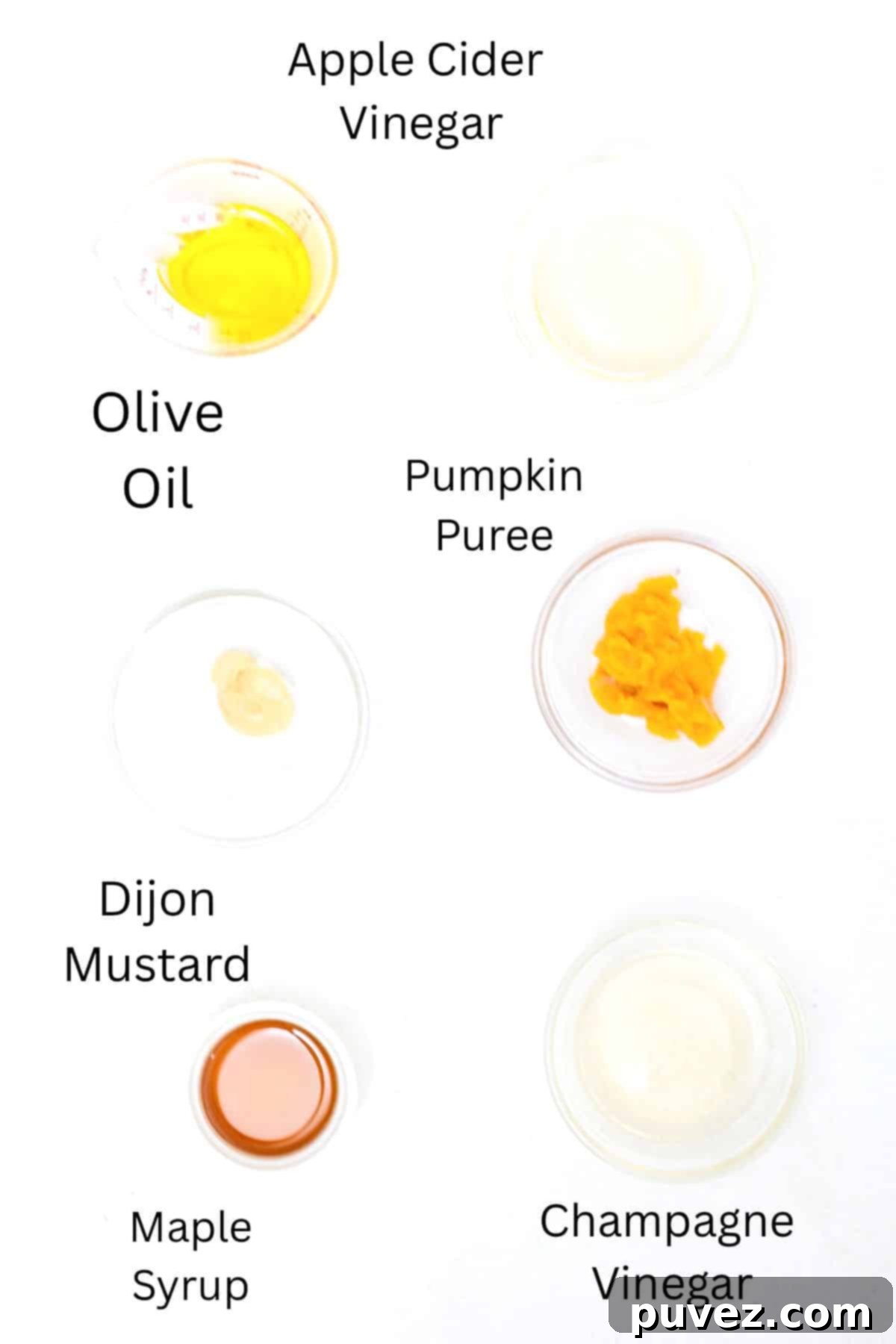
Crafting this simple yet flavorful apple cider vinaigrette dressing requires just a handful of staple ingredients. Here are a few important notes on the key components to ensure you achieve the best results. For the complete list of ingredients and precise measurements, please refer to the detailed recipe card at the very bottom of this post.
- Apple Cider Vinegar: This is the star of our vinaigrette! I personally prefer using raw apple cider vinegar, which contains “the mother.” This cloudy, cobweb-like substance is a colony of beneficial bacteria that gives raw ACV its distinctive cloudy appearance and is believed to offer additional health benefits. Its robust, tangy, and slightly fruity flavor forms the core of this dressing’s zest.
- Champagne Vinegar: To perfectly balance the bold tang of apple cider vinegar, we introduce champagne vinegar. This elegant vinegar is known for its delicate, mild, and slightly fruity acidity. It adds a layer of complexity and a softer edge to the dressing, preventing it from being overly sharp. You can typically find it in the specialty vinegar section of most well-stocked grocery stores.
- Pumpkin Puree: As our secret ingredient, pumpkin puree plays a crucial role beyond flavor. It’s primarily used to replace some of the oil in this recipe, making the dressing lighter and adding a wonderful, creamy texture without making it heavy. Crucially, ensure you use 100% pure pumpkin puree, not pumpkin pie filling, which is already spiced and sweetened. The beauty of pure pumpkin puree is its neutral taste, allowing the other flavors to shine while providing a healthy boost of vitamins and fiber.
- Extra Virgin Olive Oil: Choose a good quality extra virgin olive oil. It contributes a rich, fruity base and healthy monounsaturated fats. The quality of your olive oil can significantly impact the final taste of your dressing.
- Maple Syrup: Pure maple syrup adds a natural sweetness that beautifully complements the vinegars’ tanginess. It helps create that irresistible sweet and zesty balance. Honey can be used as a substitute if preferred.
- Dijon Mustard: This ingredient is essential for two reasons: flavor and emulsification. Dijon mustard adds a subtle, pungent kick and acts as a natural emulsifier, helping the oil and vinegar stay combined and preventing the dressing from separating too quickly. Opt for a smooth Dijon, not the grainy variety, unless you enjoy a textured dressing.
- Salt and Black Pepper: Simple seasonings that enhance all the other flavors. Adjust to your personal taste.
How to Easily Make Homemade Apple Cider Vinaigrette Dressing
Creating this delicious and healthy apple cider vinaigrette is incredibly simple, requiring minimal effort and time. Follow these straightforward steps to whip up a batch in just minutes:
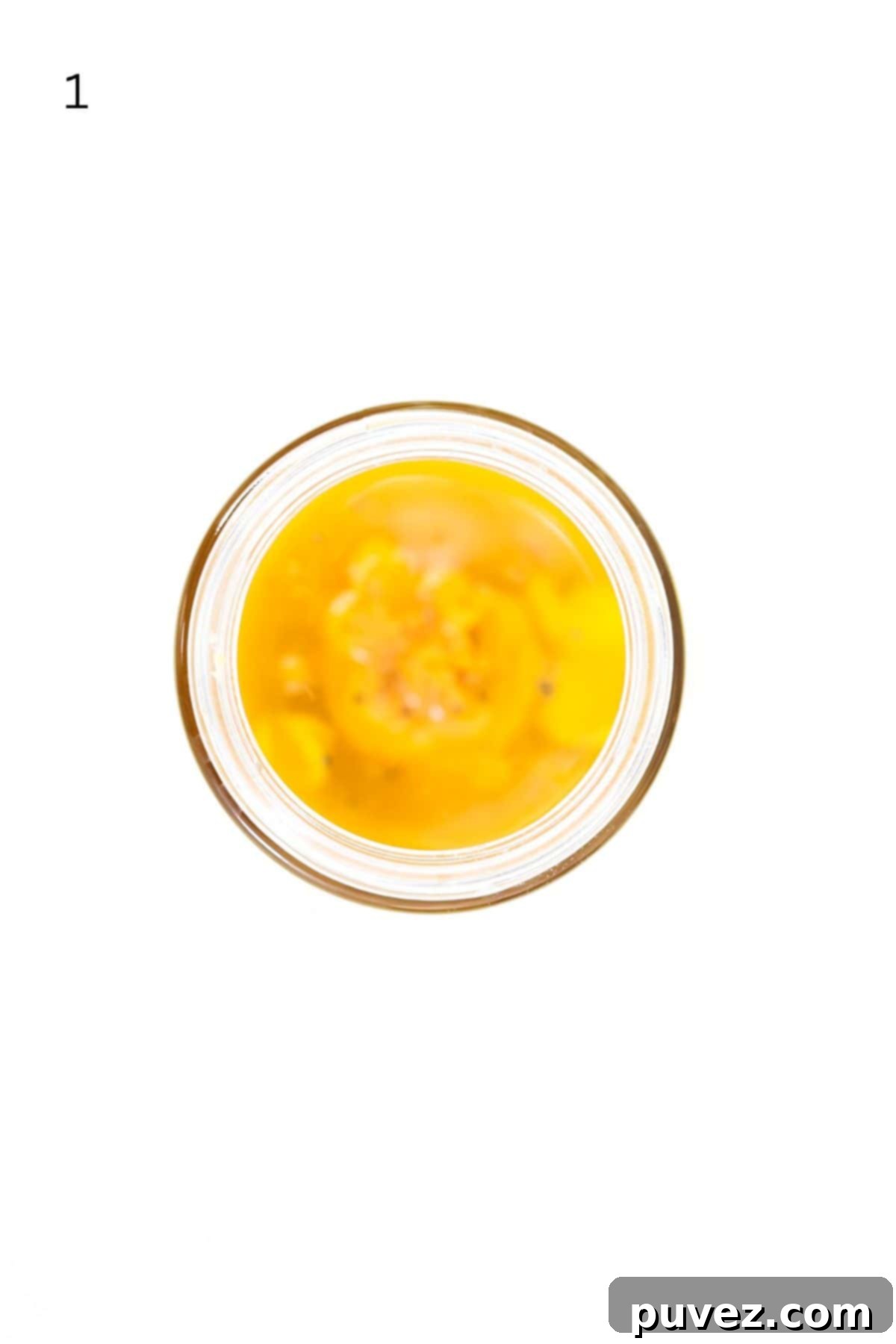

- Combine Ingredients: Gather all of your measured ingredients and carefully place them into a small bowl or a glass jar. A mason jar works perfectly for this recipe due to its tight-fitting lid.
- Emulsify: If you’re using a glass jar (as pictured above), secure the tight-fitting lid firmly. Then, give the jar a good, vigorous shake for about 30-60 seconds until all the ingredients are thoroughly combined and the dressing appears creamy and emulsified. If you’re using a small bowl, grab a small whisk and whisk all of the ingredients together until smooth and well blended. The Dijon mustard will help the oil and vinegar stay together. Taste and adjust seasonings as needed.
It’s truly that simple! In just a few quick steps, you’ll have a delightful, homemade apple cider vinaigrette ready to enhance any dish.
Creative Ways to Enjoy Your Homemade Apple Cider Vinaigrette
This versatile apple cider vinaigrette is much more than just a salad dressing. Its bright, zesty, and slightly sweet flavor profile makes it a fantastic addition to a variety of dishes. Here are some of my favorite ways to incorporate this delicious homemade dressing into your meals:
- Elevate Your Wraps: Transform ordinary wraps into something extraordinary! This apple cider vinegar salad dressing beautifully complements wraps of all kinds, from fresh veggie wraps packed with crunchy vegetables and hummus to savory turkey and kale wraps. Drizzle a generous amount inside before rolling for an extra burst of flavor and moisture.
- Hearty & Seasonal Salads: This dressing is perfectly suited for robust, hearty salads throughout the year. It shines brilliantly with winter or fall salads, especially those featuring crisp salad greens, thinly sliced fresh pear, crumbled blue cheese or feta, toasted pecans, and perhaps some roasted butternut squash. It’s equally wonderful in refreshing summer salads, pairing beautifully with avocado, dried cranberries (craisins), and flaky poached salmon or grilled chicken.
- Simple Side Salads: Recreate the delightful side salads served at many upscale restaurants right at home. Simply place a bed of your favorite salad greens on a plate, top it with refreshing cucumber and juicy tomato slices, and drizzle generously with this homemade dressing. It’s a quick, elegant, and incredibly flavorful way to complete any meal.
- Grain Salads: Don’t limit this vinaigrette to just leafy greens! I never would have considered drizzling a zesty apple cider vinaigrette on a grain salad until I experienced it at a local cafe. Their version combined hearty farro, protein-rich lentils, tender roasted vegetables, and a similar delicious dressing that had both my son and me completely hooked! Try it with quinoa, couscous, or bulgur, mixed with roasted sweet potatoes, chickpeas, and fresh herbs for a truly satisfying and flavorful meal.
- Marinade for Proteins or Vegetables: The acidity of this vinaigrette makes it an excellent marinade. Use it to tenderize and flavor chicken, pork, or firm fish before grilling or baking. It also works wonderfully as a quick marinade for vegetables like bell peppers, zucchini, or mushrooms before roasting or sautéing.
- Drizzle Over Roasted Vegetables: After roasting vegetables like Brussels sprouts, carrots, or asparagus, a light drizzle of this apple cider vinaigrette adds a bright, tangy finish that enhances their natural sweetness and savory notes.
Helpful Tips for Your Best Apple Cider Vinaigrette
Achieving the perfect homemade apple cider vinaigrette is easy, and these tips will help you customize it to your liking and ensure the best flavor and texture:
- Adjusting Oil Content: For those who prefer a richer dressing or don’t have pumpkin puree on hand, more olive oil can be used to replace the pumpkin puree. Simply increase the amount of olive oil by the same quantity as the pumpkin puree to maintain the desired volume. This will result in a more classic, oil-forward vinaigrette.
- Vinegar Choices: You have flexibility with your apple cider vinegar. Either traditional filtered apple cider vinegar or raw, unfiltered apple cider vinegar (with “the mother”) can be used. Raw ACV offers potential added health benefits and a slightly more robust flavor, but both will yield delicious results.
- Champagne Vinegar Substitution: While I love the balanced, subtle acidity that champagne vinegar brings to this recipe, it’s perfectly fine to replace it with more apple cider vinegar if you prefer a bolder, more singular vinegar flavor or don’t have champagne vinegar readily available. The dressing will still be fantastic!
- Customizing Sweetness: If you prefer your dressing sweeter, gradually add a little more maple syrup or honey until it reaches your desired taste. If you like it tangier, a splash more apple cider vinegar can be added.
- Spice It Up: For a hint of warmth, consider adding a tiny pinch of red pepper flakes. If you enjoy a garlicky kick, a small clove of finely minced garlic can be incorporated into the mix.
- Fresh Herbs: Fresh herbs like finely chopped parsley, chives, or a sprig of thyme can add an aromatic layer to your vinaigrette, particularly when serving it with specific salads. Add them just before serving for the freshest flavor.
- Taste and Adjust: Always taste your dressing before serving and adjust the salt, pepper, sweetness, or tanginess to suit your personal preferences. The beauty of homemade dressing is the ability to tailor it exactly to your palate!
Frequently Asked Questions About Apple Cider Vinaigrette
To maintain its freshness and flavor, store this apple cider vinaigrette refrigerated in an air-tight container, such as a mason jar. It will keep well for up to 3-5 days. If the olive oil solidifies too much in the refrigerator, simply let the dressing sit out at room temperature for a few minutes before giving it a good shake or whisking it again to re-emulsify and bring it back to a pourable consistency.
A commonly recommended ratio for oil to vinegar in a standard vinaigrette is 3 parts oil to 1 part vinegar, or sometimes 2 parts oil to 1 part vinegar for a tangier dressing. However, this particular apple cider vinaigrette recipe utilizes a much lower ratio of approximately 1 part oil to 2 parts vinegar (a combination of apple cider vinegar and champagne vinegar). This unique ratio is possible and yields a perfectly balanced dressing because the pumpkin puree replaces a significant portion of the oil, providing body and creaminess without the added fat.
No, this homemade salad dressing should not be stored at room temperature. Due to the presence of fresh ingredients and the type of oils used, it requires refrigeration to remain safe and fresh. Always refrigerate any leftover dressing in a mason jar or another air-tight container with a tight-fitting lid immediately after use.
Yes! This apple cider vinaigrette is naturally vegan, as it uses maple syrup as a sweetener. It is also inherently gluten-free, making it a wonderful option for various dietary needs and preferences.
While apple cider vinegar and champagne vinegar create a uniquely balanced flavor profile in this recipe, you can experiment with other vinegars. White wine vinegar or red wine vinegar could be used, but be aware that they will alter the taste profile, making it less distinctively “apple cider.” Balsamic vinegar would change the flavor dramatically and is not recommended as a direct substitute for this specific recipe.
More Delicious Homemade Salad Dressings to Try
If you’re now a convert to the world of homemade salad dressings, you’re in luck! There’s a whole world of fresh, flavorful options waiting to be explored. Once you’ve mastered this apple cider vinaigrette, consider trying these other easy and delicious recipes to expand your culinary skills and bring even more variety to your meals:
- Healthy Caesar Salad Dressing (no Mayo): A lighter, healthier take on a classic favorite, perfect for Caesar salad lovers.
- Strawberry Balsamic Dressing: A beautifully fruity and tangy dressing, fantastic for spring and summer salads.
- Simple Lemon Garlic Salad Dressing: A bright, versatile dressing that complements almost any green salad or roasted vegetable.
- Fresh Basil Balsamic Dressing: Herbaceous and sweet, this dressing is a taste of summer, excellent with caprese or fresh tomato salads.
- Vibrant Mango Dressing: A tropical, sweet, and tangy dressing that’s perfect for chicken, shrimp, or fruit salads.
Discover More Easy & Healthy Recipes
Beyond delicious dressings, my kitchen is always buzzing with simple, wholesome, and flavor-packed recipes designed to make healthy eating accessible and enjoyable. Here are a few more easy recipes to inspire your next meal:
- Easy Roasted Peaches
- Butternut Squash Pasta Sauce
- Simple Lemon Garlic Salad Dressing
- Why is Fiber Important?
Did you whip up this fantastic homemade apple cider vinaigrette dressing and absolutely love it? I’d be thrilled to hear your thoughts! Please consider leaving a ⭐⭐⭐⭐⭐ rating and a comment below to let me know how it turned out for you. A 5-star rating is truly the best compliment and helps others discover this delicious recipe!
And don’t forget to follow me on Instagram and Pinterest for daily meal inspiration, healthy tips, and more delicious recipes!
📖 Recipe
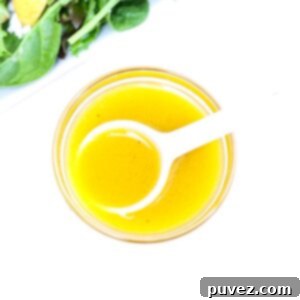
Apple Cider Vinaigrette Dressing
KristiEquipment
-
1 glass jar with tight fitting lid or small bowl and a whisk
Ingredients
- 1½ tablespoon pumpkin puree do not use pumpkin pie filling
- 1½ tablespoon olive oil extra virgin
- 1½ tablespoon apple cider vinegar I use raw apple cider vinegar
- 1½ tablespoon champagne vinegar
- 1 tablespoon maple syrup pure maple syrup. can use honey instead.
- 1 teaspoon Dijon mustard not the grainy kind (unless you really like mustard).
- 1 pinch salt
- 1 pinch black pepper
Instructions
-
Place all measured ingredients – pumpkin puree, olive oil, apple cider vinegar, champagne vinegar, maple syrup, Dijon mustard, salt, and black pepper – into a jar with a tight-fitting lid or a small mixing bowl.
-
If using a jar (as pictured above), securely place the tight-fitting lid on the jar and give it a good, vigorous shake for about 30-60 seconds until all ingredients are well combined and emulsified. If using a small bowl, use a small whisk to thoroughly whisk all of the ingredients together until smooth and creamy. Taste and adjust seasonings as needed for your perfect balance of sweet and zesty.
Notes
-
- For a richer dressing or if pumpkin puree isn’t available, more extra virgin olive oil can be used to replace the pumpkin puree. Simply use 1½ tablespoons more olive oil.
-
- Either traditional filtered apple cider vinegar or raw, unfiltered apple cider vinegar (with “the mother”) can be used based on your preference.
-
- While the combination of apple cider vinegar and champagne vinegar offers a balanced flavor, you can certainly replace the champagne vinegar with an equal amount of additional apple cider vinegar for a stronger apple cider profile.
- Store this homemade apple cider vinaigrette refrigerated in a mason jar or any other air-tight container for up to 3-5 days for optimal freshness.
